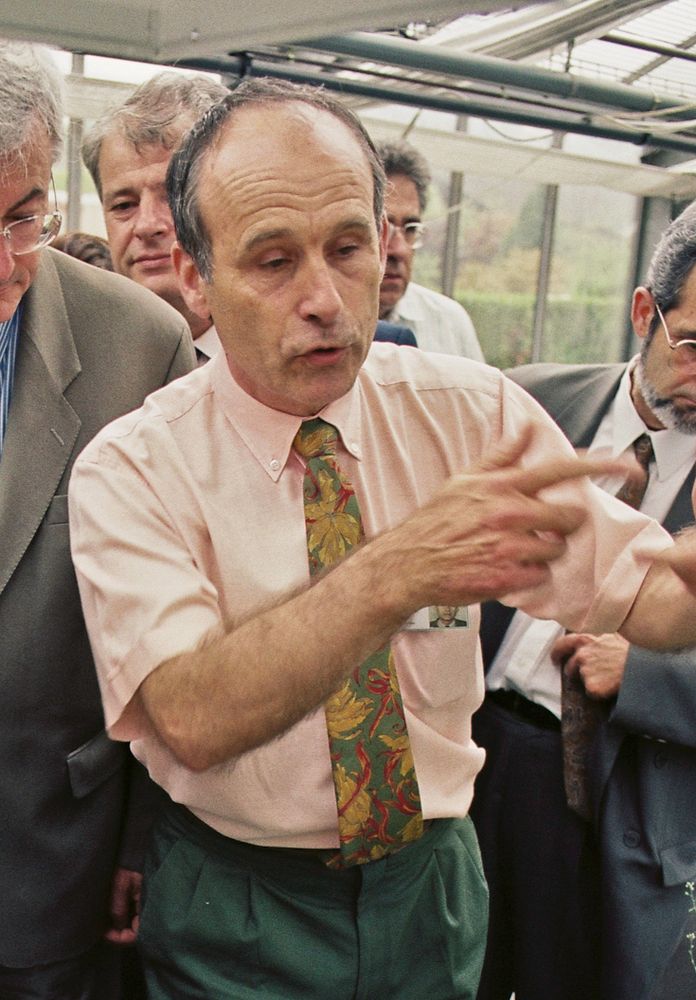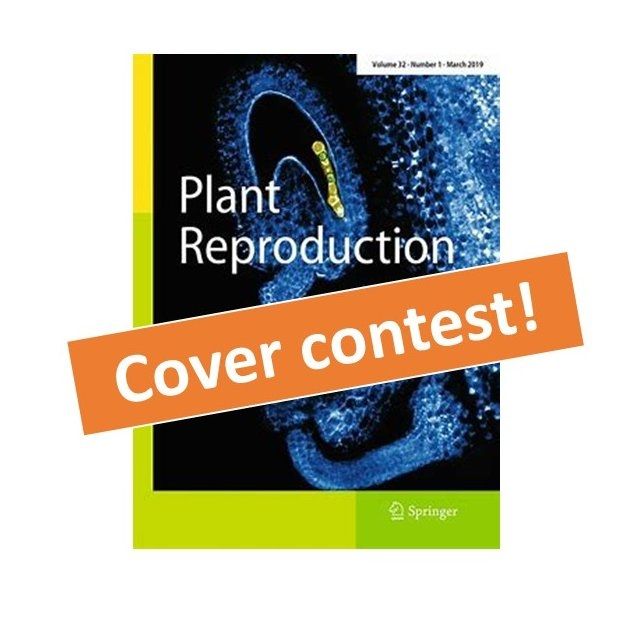
14èmes journées annuelles de formation (JST2025) du Réseau des Microscopistes INRAE (RµI) - 5-7 novembre 2025 à Versailles
10.09.2025 06:43 — 👍 4 🔁 2 💬 0 📌 0@lepiniec.bsky.social
#PlantScience, #Research, #Formation and #Innovation, @UnivParisSaclay, @INRAE, @ijpb_fr, Head @SPS_Plant_Sci, Consult. Pr. @AgroParisTech, @AcademieAgri, https://linktr.ee/loic_lepiniec

14èmes journées annuelles de formation (JST2025) du Réseau des Microscopistes INRAE (RµI) - 5-7 novembre 2025 à Versailles
10.09.2025 06:43 — 👍 4 🔁 2 💬 0 📌 0
Antimicrobial Peptides as Part of the Arsenal of Constitutive and Inducible Seed Defences in Tomato Seed Exudates Against Pathogens
https://bsppjournals.onlinelibrary.wiley.com/doi/10.1111/mpp.70164

Plant ETP Strategic Research&Innovation Agenda 2025–34 published to guide European R&I in plant biology and breeding from fundamental research to crop production & distribution. Plant ETP & EPSO offer to collaborate with policy makers to implement it. bit.ly/473p166 #PlantScience #EUCompetitiveness
02.10.2025 09:56 — 👍 1 🔁 1 💬 0 📌 0
Les champignons, les bons🍄🟫🍺🥖, les brutes 🍄🍄🟫 et les truands 🍄🟫☘️c’est ce week-end ! @inrae-bioger.bsky.social @spsplantsciences.bsky.social #Phytopathologie mais aussi
#InteractionsMicrobiennes
#MetabolitesSpecialisés #ANR-FRiPPon
🗓️ Prolongation !
L'appel à candidature pour le comité d'expertise scientifique des futures presses de l'Université Paris-Saclay est prolongé jusqu'au 10/10/2025.

Flavonoid characterization: It takes more than Arabidopsis seed colours!
We are delighted to be part of this collection celebrating Planta Centennial: "Revisiting Key Research Published in Planta's First 100 Years"

IJPB Symposium 2026 - Chemical interactions between plants and their environment: from the molecule to the field - Save the date 23-25 of September..
30.09.2025 08:44 — 👍 1 🔁 1 💬 0 📌 0 27.09.2025 19:14 — 👍 0 🔁 1 💬 0 📌 0
27.09.2025 19:14 — 👍 0 🔁 1 💬 0 📌 0

Time-resolved reprogramming of single somatic cells into totipotent states during plant regeneration,
https://www.cell.com/cell/fulltext/S0092-8674(25)01020-7

A host organelle integrates stolen chloroplasts for animal photosynthesis
19.09.2025 16:05 — 👍 2 🔁 2 💬 0 📌 0
NRT1.1B acts as an abscisic acid receptor in integrating compound environmental cues for plants
19.09.2025 15:59 — 👍 5 🔁 1 💬 0 📌 0
Ancient hybridization underlies tuberization and radiation of the potato lineage
19.09.2025 15:50 — 👍 3 🔁 2 💬 0 📌 0
Here is an interesting review published in the “N3AF” (Notes from the French Academy of Agriculture). lnkd.in/d-sMMui2
Why not do the same! The editor and reviewers are serious and constructive, there is a DOI for easy dissemination and citations, and it's FREE! doi.org/10.58630/pub...

Arabidospis ... the last annual MASC (Multinational Arabidopsis Steering Committee) report (2024-2025) is available ! – Arabidopsis, arabidopsisresearch.org/masc-publica...
15.09.2025 08:46 — 👍 13 🔁 11 💬 0 📌 0
The characterization of the LEAFY COTYLEDON 2 activation domains reveals its conserved dual mode of action in flowering plants (IJPB, SPS)
21.08.2025 11:25 — 👍 4 🔁 3 💬 0 📌 0
Les OGM ont-ils des effets néfastes sur la santé ? Il y a treize ans, l’étude Séralini l’affirmait, avant d’être rétractée. Aujourd’hui, une recherche menée sur deux générations de primates démontre le contraire. Bénéficiera-t-elle de la même couverture médiatique ?
lel.media/aucun-impact...

Colloque : Les plantes dans un environnement à fort CO2 : contraintes et opportunités | Académie des sciences, https://www.academie-sciences.fr/les-plantes-dans-un-environnement-fort-co2-contraintes-et-opportunites
17.07.2025 08:17 — 👍 4 🔁 3 💬 0 📌 0
June Issue. Read FREE: Low glycemic index rice for countering diabetes epidemic in Asia (see cover); Advances in digital camera-based phenotyping of Botrytis disease development; Epitranscriptomic regulation through phase separation in plants; & much more
www.cell.com/trends/plant...
#plantscience

Mathilde Grelon elected to EMBO Membership, ijpb.versailles.inrae.fr/en/news/math...
07.07.2025 09:52 — 👍 4 🔁 1 💬 0 📌 0
📅 Oct 1st, @ijpb-versaillescly.bsky.social will honor our dear colleague Jean-François Morot-Gaudry 🌿
📍 INRAE Versailles
⌚ From 9:30 AM
👨🔬 With talks by C. Masclaux, A. Limami, C. Foyer, B. Hirel & more
📝 Register: 👉 bit.ly/4kj9eUd
@inrae-france.bsky.social
@irhs-angers.bsky.social

🎙️ #IJPB Seminar
We're thrilled to host @mat-ingouff.bsky.social from @umontpellier.bsky.social for a talk on live-imaging sensors to track CG methylation in plant cells🌿🧬
📅 Thursday, July 10
🕚 11 AM
🔗 More info: bit.ly/44rhlrW
@inrae-france.bsky.social @univparissaclay.bsky.social
#PlantScience
Congrats, Hervé!
Your pioneering research @ijpb-versaillescly.bsky.social continues to advance our understanding of epigenetic mechanisms and post-transcriptional regulation - an inspiration to the entire plant science community! 🌱👏

📣 Join us for the 3rd Carbon Allocation in Plants Workshop 🇨🌿
🗓️ Oct 27–29, 2025
📍 INRAE Versailles – @ijpb-versaillescly.bsky.social
🌱 Explore carbon flow in plants with top researchers!
🔗 Register: bit.ly/4kYzzrT ⏳ 10th of August
ℹ️ Info: bit.ly/43HpN5P
🙏 Thanks to all partners 👇 see below


🎯EPSO Contributions from plant research and innovation to EU circular regenerative and competitive #Bioeconomy – position paper from #PlantFactories, #Plants&Microbiomes and #Horticulture Working Groups. bit.ly/449vwSd. #PlantScience #SDG #HorizonEU
24.06.2025 10:15 — 👍 9 🔁 6 💬 0 📌 0www.youtube.com/playlist?lis...
20.06.2025 06:27 — 👍 0 🔁 0 💬 0 📌 0
#IJPB x SPS seminar
🤩 Excited to host @rnaplant.bsky.social (@ibmp-cnrs.bsky.social) to talk on RNA polymerase & transposable elements! 🧬🌲
🗓️ Tue 17 June 🕜 3 PM
More 👉 bit.ly/43H8dAl
@inrae-france.bsky.social @ecodocseve.bsky.social @univparissaclay.bsky.social @spsplantsciences.bsky.social

Want to see your amazing plant reproduction picture on the cover of this fantastic journal @springernature.com? 🤩🌱
We are looking for it!
📸Take part in our contest and get the prize!
More info? 👉visit our website!😉

Ces pays qui ont réussi à réduire pesticides et engrais chimiques en accompagnant les agriculteurs
theconversation.com/ces-pays-qui...
"Plant Sciences in the Anthropocene" workshop,
videos of the seminars are available on youtube, www.youtube.com/@institutpas...